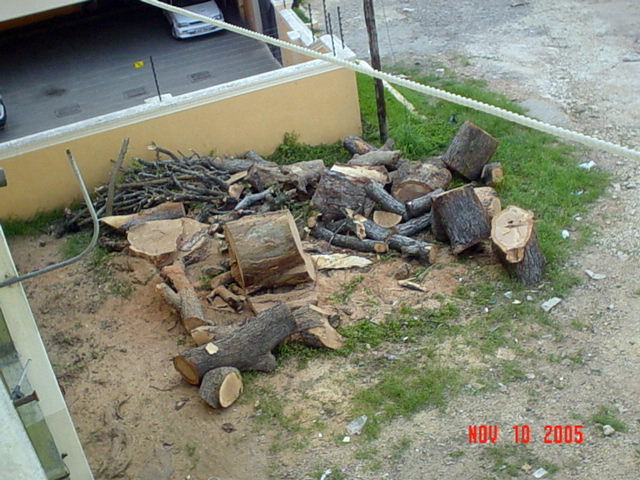This is an excellent assessment of what ails
our once beautiful and safe and friendly town...
Raziya
For those who want a comprehensive analysis of Mombasa
here is a detailed report available in pdf format .
> http://www.bvsde.paho.org/bvsacd/cd26/enurb/v12n1/153.pdf
>
> Poverty and political conflict in Mombasa
> Carole Rakodi, Rose Gatabaki-Kamau and Nick Devas
>
> SUMMARY: This paper describes how complex political struggles in Mombasa
> underlie the inadequate provision for basic infrastructure and services, and
> the corruption and lack of accountability within government. These struggles
> are underpinned by overlapping responsibilities and rivalry between central
> and local government, and a political system (both national and local) which
> plays on ethnic and tribal loyalties as a basis for support and reward. The
> paper also describes how and why the city has failed to fully realize its
> economic potential, has extensive poverty and experiences major inadequacies
> in provision for water, sanitation, garbage collection, health care,
> education and housing. Drawing on the findings of
> a recent participatory poverty assessment, the paper outlines the coping
> strategies of poor and very poor households and suggests measures which
> would help ensure that their needs receive more attention.
>
> In this article, the state of the city's economy is analyzed, with
> particular reference to the opportunities it generates for the poor. This is
> followed by a review of the evidence on the extent and nature of poverty.
> Important in this context is the social heterogeneity of the city, a product
> both of the economic opportunities available and of its history.
> Responsibility for governance is divided, mainly between the Mombasa
> Municipal Council (MMC) and the district organization of central government.
> Central-local relations are key to understanding the city's politics. The
> performance of public service providers is assessed in Section IV, followed
> by an analysis of the characteristics, dynamics and governance of the
> informal settlements in which the majority of the city's population,
> including
> the poor, live. Finally, recent attempts to devise more appropriate
> approaches to poverty reduction are described.
>
> Carole Rakodi is a professor in the Department of City and
> Regional Planning, Cardiff University and course director of the
> international MSc in Urban Planning. Rose Gatabaki-Kamau is a
> researcher in the Housing and Building Research Institute, University of
> Nairobi, Kenya. Nick Devas is a senior lecturer in the International
> Development Department,School of Public Policy,
> University of Birmingham.
> Address: Carole Rakodi,
> Department of City and
> Regional Planning, Cardiff
> University, Glamorgan
> Building, King Edward
> VII Avenue, Cardiff CF10
> 3WA, UK; e-mail:
> rakodi@cf.ac.uk
> 1. This is a summary of one
> of nine city case studies
> prepared as part of a
> research programme on
> Urban Governance,
> Partnerships and Poverty,
> funded by the UK
> Department for
> International
> Development's ESCOR
> programme. This involved
> research teams in each of
> these cities and a coalition
> of UK-based research
> groups from the University
> of Birmingham, the
> International Institute for
> Environment and
> Development (IIED), the
> University of Wales,
> II. ECONOMIC GROWTH, URBAN DEVELOPMENT
> AND THE POOR
> SINCE AT LEAST the eleventh century, Mombasa has been a trading port.
> Arab and Shirazi settlers established themselves as farmers and in coastal
> towns, including Mombasa. Conflict over control of the towns followed
> the arrival of Portuguese explorers in the fifteenth century. Early in the
> eighteenth century, the Portuguese withdrew and Mombasa came under
> the control, first, of Omani Arabs and then of the Sultan of Zanzibar. The
> economy of the port depended on trade in ivory, grain and slaves. In 1895,
> the British government took over administrative responsibility for Kenya
> from the British East Africa Company, and from the Sultan of Zanzibar
> for the coastal strip. Construction of the railway to Uganda was started
> and, in 1907, the capital of the colony moved from Mombasa to Nairobi
> which, subsequently, rapidly overtook Mombasa in terms of population
> and economic importance.
> The city has a diverse economy based on trade and commerce, tourism
> and manufacturing. However, none of these sectors is as prosperous as
> might be expected. Trade has been damaged by regional and intra-national
> instability and conflict, external shocks and poor management of the
> national economy, before and since the adoption of intensified structural
> adjustment policies at the beginning of the 1990s. The total volume of
> cargo
> traffic (8.5 million tonnes in 1998)(3) has stagnated over the last 20
> years.
> The small annual increase between 1992 and 1998 (0.54 per cent per
> annum) can be attributed to increased imports associated with trade
> liberalization,
> rather than export growth. In addition, operation of the port is
> hindered by poor rail and road transport links within the city and with its
> hinterland, and by congestion and mismanagement. The import-export
> trade is widely associated in Kenya with corruption and tax evasion, and
> the responsible parastatal, Kenya Ports Authority (KPA), is generally
> regarded as inefficient. Between 1993 and 1995, increased congestion at the
> port was compounded by mismanagement said to be associated with the
> appointment of Rashid Sajjad, a local businessman of Asian origin, a
> nominated

No comments:
Post a Comment